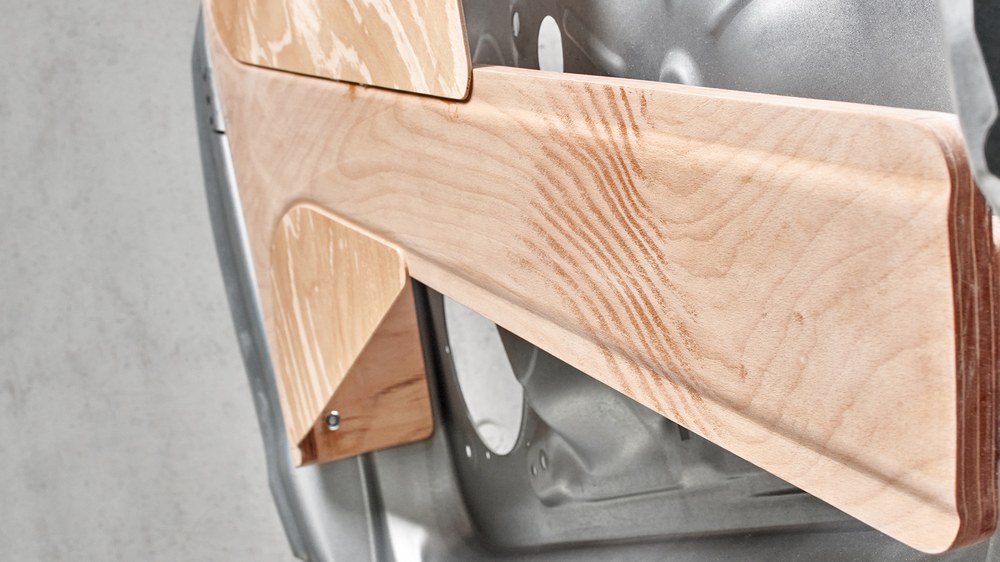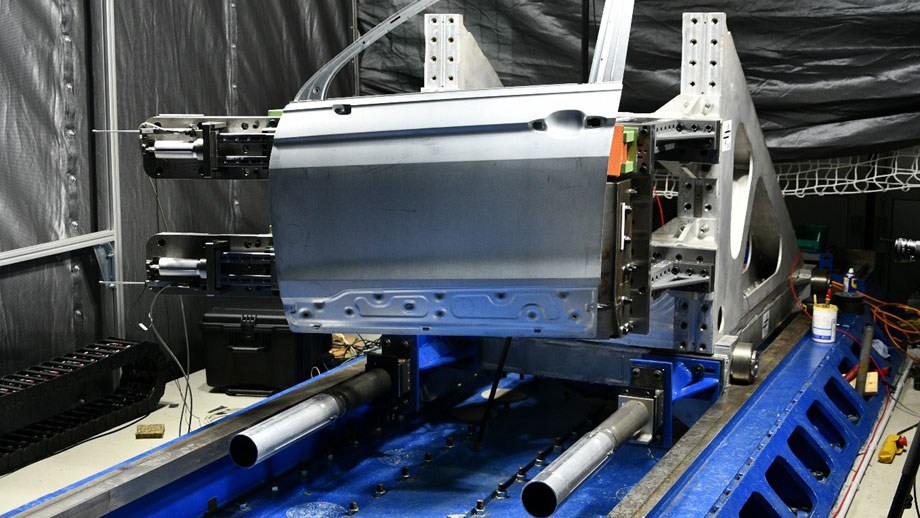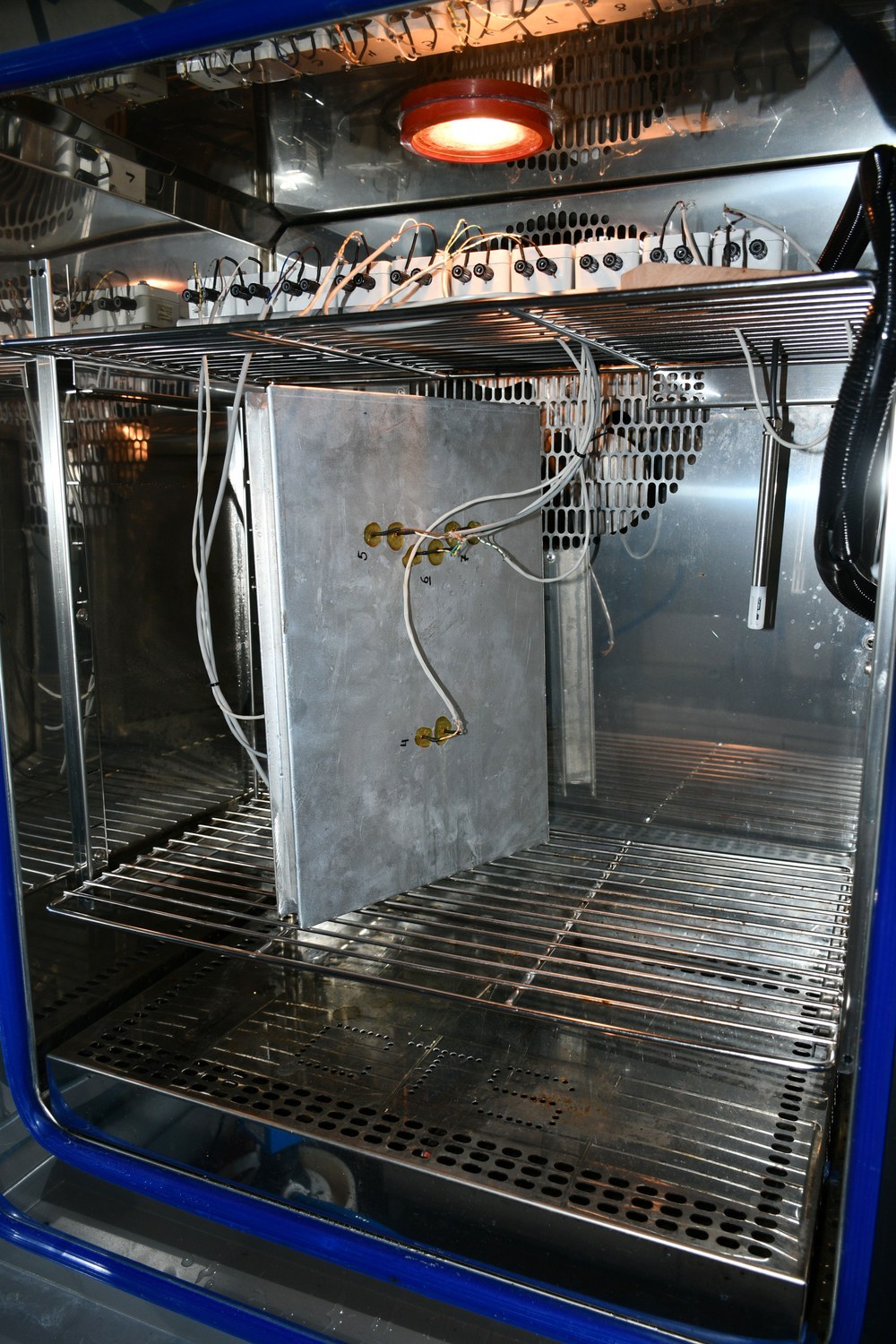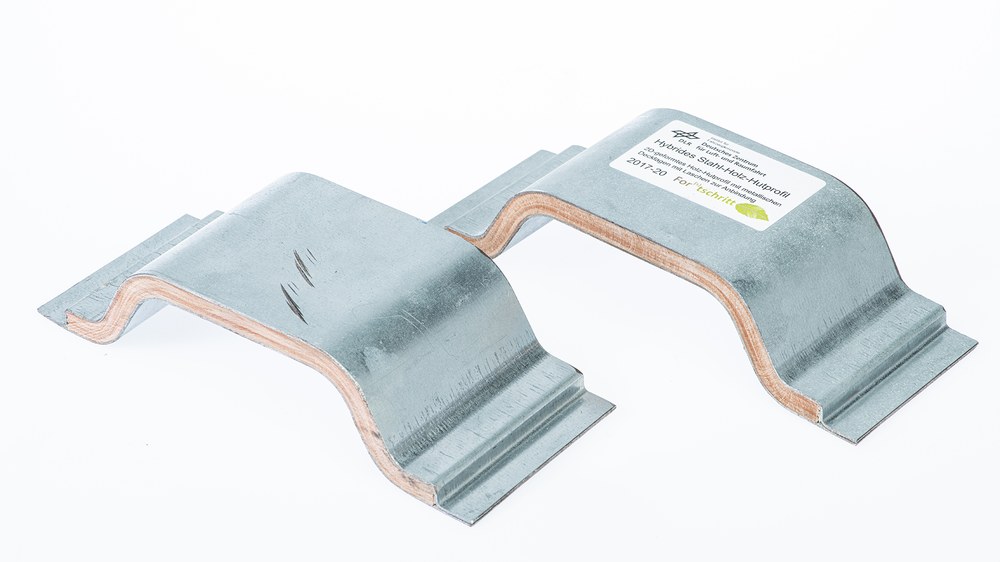In the "For(s)tschritt" project, which was funded by the Federal Ministry for Economic Affairs and Energy (BMWi) over a period of three and a half years (project sponsor: TÜV Rheinland Consulting GmbH), nine industrial and scientific partners have joined forces to exploit the lightweight construction potential of wood in composite materials with metallic materials in load-bearing structures. Because of this, in addition to the characterisation of wood-based multi-material systems for the creation of simulation models, structurally relevant assemblies for rail and road vehicles were manufactured and used as demonstrators.
During the project, DLR was involved with the conception, design, optimisation, simulation, testing and validation. The objective of the research project was to qualify beechwood-based multi-material systems for use in vehicle structures of the future. In this way, economically and ecologically attractive alternatives to existing material solutions should be created.
Motivation for using wood
Wood has very good specific mechanical characteristic values in the direction of the fibres and is comparable with typical technical materials such as aluminium or magnesium. Moreover, wood is a renewable resource that binds CO2 during its growth. By using beech wood, short transport routes and good availability within Europe is a guarantee.
Use of materials in the project
Within the framework of the research project, the use of beech wood veneers was subject to considerable investigation. This resulted in various concepts being developed, including using the material to reinforce thin sheets and using structural components made entirely of wood that were only locally reinforced with sheet metal. On the whole, three different reference assemblies were considered - a functionally integrated door impact beam for a passenger car, a door panel for a rail vehicle and a segment of the side wall of a rail vehicle. More detailed information on the composition of the project consortium can be found at holz-im-auto.de
Challenges when using wood
Using wood certainly has its challenges. These include, for example, scattering material characteristics, the dependence of material properties on environmental conditions, such as humidity, and in particular the simulation of the material. The project also focused on wood/wood or steel/wood bonding, which have to meet the high requirements from automotive construction (e.g. cathodic dip coating, process times) and rail vehicle construction (e.g. fire protection). Solutions were developed and validated through design measures and scientific investigations of interactions. For this purpose, a comprehensive test programme was performed to characterise wood-based multi-material systems. Furthermore, a suitable simulation methodology was developed and the material models were conditioned with the obtained characteristic values. This provided a sound basis for the development of the wood-based concepts.
Functionally integrated door impact beam for a passenger car
For the reference component "functionally integrated door impact beam for a passenger car", a complete door with a wood-based function-integrated door interior structure was built at the project partner Volkswagen and subjected to a crash test with a pile at DLR.

The functionally integrated wooden interior structure replaces several steel components (door impact beams, upper and lower hinge reinforcement and door check reinforcement) and the bitumen mats used for anti-drumming with a veneer wood-based component. The crash performance of the component was optimised through targeted hybridisation using a thin steel strip.

Thanks to a special test bench concept, the deformations at the hinge connections, the sliding of the door at the B-pillar and the connection at the door lock could be mapped for the crash test in a way comparable to the overall vehicle crash. In the test, the sledge together with the pile assembly with a mass of 841 kg hits the door at a velocity of 8.31 m/s.

It was demonstrated that the intrusion of the pile in the door with wood-based functionally integrated door interior structure was just over 2.6 % above that of the reference door. However, it must be taken into account that the wood-hybrid door absorbed about 5.9 % more energy than the reference at the same time.The developed wood-based door interior structure consists of almost 90 % laminated veneer wood and impressively demonstrates the potential of wood also in safety-relevant assemblies that are exposed to extremely high mechanical loads.
Reference assembly rail vehicle "door"
For the rail vehicle door assembly, a modular wood-intensive approach was implemented based on the existing construction method. Individual hat profiles that can be used for both flat and slightly curved structures form the core of the structure. These elements are combined with very thin aluminium sheets (0.6 mm) reinforced with wood veneers. The concept developed made it possible to use significantly simpler and narrower aluminium profiles. The wooden components can be manufactured inexpensively and with simple tools. In addition, the thickness of the door panel could be reduced from 38 mm to 32.6 mm. Overall, a weight reduction of 15% and a substitution of aluminium components by wood could be achieved. In an initial step, the concept was simulated for various load cases such as "misuse" and wind loads at DLR and then built as a prototype at the company Schaltbau Bode and successfully tested on a component test bench.

One of the central questions in the conception and design was the moisture absorption of the wood during operation. To deal with this question an in-situ measurement method was developed and the distribution of moisture in the component was determined using generic components in a climate chamber. It was demonstrated that even at high temperature and humidity (+60°C and 80% rel. humidity) no critical wood moisture develops. Delamination or other damage to the composite was also not observed after a large number of climatic cycles (20 cycles according to PV1200 from - 40°C to +80°C).

Reference assembly rail vehicle "side wall"
A side wall segment from the Alstom company was selected for the rail vehicle reference assembly. For this reason, the approach of using a homogeneous wood sandwich core with metallic cover layers was pursued. By reshaping the veneer layer composite and subsequent planking, even more complex geometries can be created.

The developed side wall segment was fully simulated. One of the most critical load cases is the so-called double cantilever seat. For this purpose, a cantilever arm is screwed into the side wall and two seats are attached to it. Due to static and dynamic loads, the side wall must absorb and dissipate very high forces. In addition, suitable joining processes also had to be selected and validated. During the project, in addition to the simulative proof by DLR, it was also possible to demonstrate using the test bench at the Alstom company that the permissible deformations were not exceeded.

In addition to the mechanical performance of the respective assembly, fire protection behaviour also plays a very important role in the rail vehicle sector. The composite materials were therefore tested in accordance with DIN 45545 with regard to fire protection. For the requirement sets R1 and R7 (structural components inside/outside and covers) the highest hazard level (HL 3) could be achieved.
Summary
Within the framework of the project, wood was proven to be a material that can be used for different load cases and applications in rail and road vehicles. Many of the initial concerns regarding moisture absorption, thermal expansion, fire protection or corrosion behaviour could be eliminated by using intelligent concepts and proving through numerous trials. Thus, even for a highly critical safety-relevant component such as the door impact beam, the general feasibility of a wooden construction could be demonstrated. The results of the extensive investigations of all project partners involved can be found in the final report. DLR would like to thank all project partners for their excellent cooperation. If you are interested in the topic of wood in vehicle structures, we look forward to receiving your enquiry.
Funded by:

